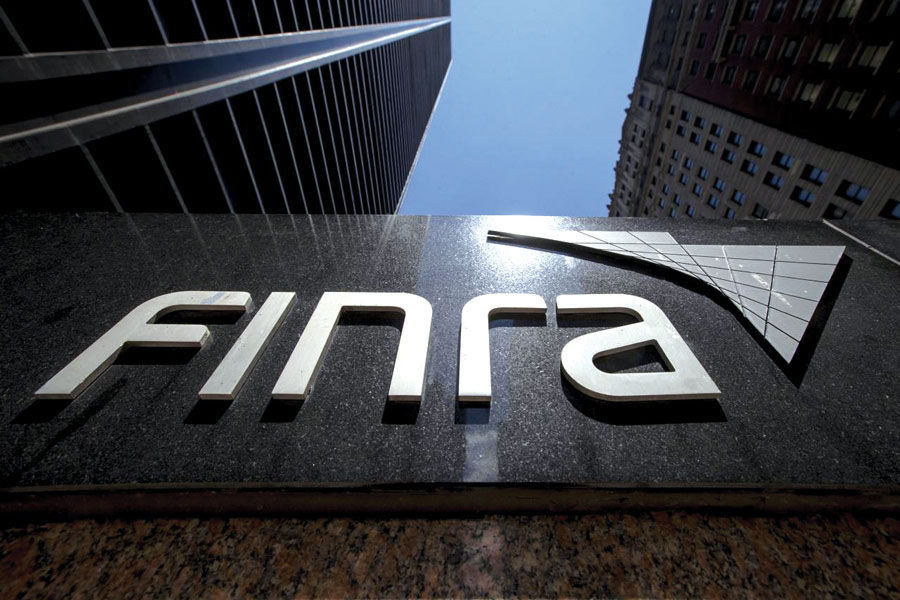

When big brokerages violate Finra rules, the industry’s self-regulator could hit them with larger fines under an update of its sanctions parameters.
The Financial Industry Regulatory Authority Inc. removed the $310,000 ceiling on the recommended highest range for penalties for midsize and large firms, according to a regulatory notice released Thursday.
The update aligns the guidelines with the reality that Finra often imposes larger penalties, such as the record $70 million fine of Robinhood over alleged investor harm related to the gamification of trading activity.
“It codifies there’s no upper limit to a number of the sanctions,” said Brad Bennett, who headed Finra’s enforcement arm from 2011 to 2017.
The sanctions reforms “give enforcement additional tools to address misconduct," he said. "Net-net, the bottom line is they’re good for investor protection.”
The regulatory notice said the sanctions guidelines don’t set predetermined fine amounts for violations but rather establish the baseline fine that can be adjusted if there are aggravating or mitigating circumstances.
Removing the high end of the sanction range reflects the settlement amounts Finra typically seeks for fraud, churning, best-execution failures, supervisory lapses, sales of unregistered securities and other violations.
The sanctions guidelines are used by Finra hearing panels and its National Adjudicatory Council when imposing penalties. The revision splits each current guideline into one for firms and one for individuals and creates separate fine ranges for small and large firms, in addition to eliminating the fine ceiling for big brokerages.
“It’s a pretty explicit recognition that larger firms will pay larger fines,” said Susan Schroeder, a partner at WilmerHale and director of Finra enforcement from 2017 to 2019.
Finra is modernizing its sanctions structure, said Emily Gordy, a former Finra senior vice president for enforcement.
“It doesn’t make them tougher,” said Gordy, a partner at McGuireWoods. “What it does is … more accurately reflect what [Finra’s] expectations are, what they’re seeking in settlements and what sanctions might be imposed in litigation. They’ve removed that higher end of the range. It’s a clear way to explain to people what might happen.”
Other reforms include introducing six anti-money-laundering guidelines, describing additional nonmonetary sanctions and establishing a $5,000 minimum for all sanction ranges.
“The changes to the Sanction Guidelines align the sanctions to where FINRA’s Enforcement program has evolved,” Finra executive vice president and head of enforcement Jessica Hopper said in a statement. “The Sanction Guidelines also bolster FINRA’s mission of protecting investors by reflecting how grave violations of FINRA’s rule will result in serious sanctions.”
The sanctions revisions help Finra demonstrate an emphasis on enforcement, Bennett said.
“Their public statements indicate they’re under pressure from the [Securities and Exchange Commission] to show increased enforcement results,” he said. “I think [the sanctions update] is a positive step. They were really well thought-out.”
The enhanced sanction specificity could deter malfeasance.
“Having this increased clarity can really assist in compliance efforts,” Gordy said.
Although Schroeder praised the sanctions reform as a “really meaningful update,” she questioned its genesis. The changes were presented to the NAC, essentially Finra’s Supreme Court, by Finra staff who often argue in front of it for penalizing member firms.
“That’s backwards,” Schroeder said. “The NAC is meant to be the objective, decision-making body that sets the standards that Finra staff is supposed to follow. It results in Finra staff having more room to demand higher sanctions.”

Relationships are key to our business but advisors are often slow to engage in specific activities designed to foster them.

Whichever path you go down, act now while you're still in control.

Pro-bitcoin professionals, however, say the cryptocurrency has ushered in change.

“LPL has evolved significantly over the last decade and still wants to scale up,” says one industry executive.

Survey findings from the Nationwide Retirement Institute offers pearls of planning wisdom from 60- to 65-year-olds, as well as insights into concerns.
Streamline your outreach with Aidentified's AI-driven solutions
This season’s market volatility: Positioning for rate relief, income growth and the AI rebound
